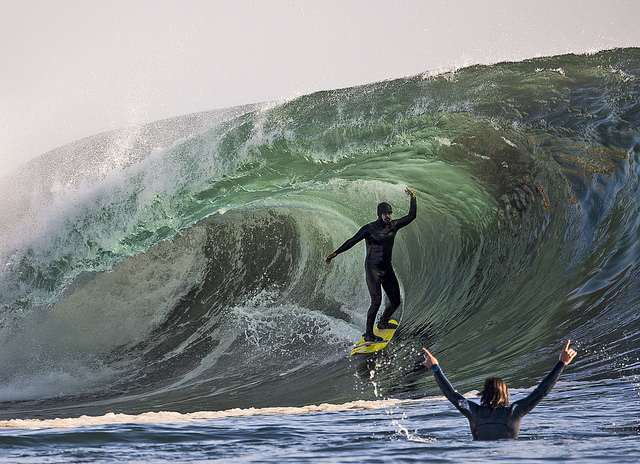(By Maria Patterson – Contributing Editor)
Last December, my 18-year-old son added a swanky Patagonia Better Sweater to his holiday wish list. I’ll admit, with a price tag of $120, I was a bit disgruntled, but it was well-made, attractive and wise gear for a Boston winter. And hey, it was Christmas.
Imagine my surprise when a few days later I received an email from Patagonia informing me that 100 percent of my purchase (yes, all of it) had been donated to “grass-roots environmental causes” across the world. After pledging to donate all of its global retail and online Black Friday sales to non-profits “working on the frontlines” to “protect our air, water and soil for future generations,” the Ventura, Calif.-based retailer surpassed its goal of generating $2 million during the post-Thanksgiving shopping frenzy, and wound up earning and then donating a whopping $10 million. Finally, a reason to feel good about Black Friday.
But that’s just the tip of the iceberg at Patagonia where corporate responsibility is standard protocol. Abiding by a strict set of criteria for not only environmental responsibility, but for fair trade and fair labor practices as well, Patagonia is a founding member of the Fair Labor Association (FLA). The FLA is a third-party organization that holds firms like Patagonia accountable to the standards they put in place, conducting random supply-chain audits and suggesting improvements. All of this, by the way, is public information available on the FLA site.
Take a look under the hood and you’ll find that Patagonia’s social responsibility runs deep—all the way down to the materials used to manufacture its renowned outdoor clothing and gear. According to the firm, environmentally friendly materials are used whenever possible, including materials from farms such as organic cotton, Traceable Down, Tencell® lyocell, hemp and natural rubber.
Patagonia found itself in the natural rubber business when it decided to start producing wetsuits in 2005, but discovered that the process had negative ramifications for the environment. Turns out that neoprene – the base material for wetsuits since the 1950s – is damaging to the environment due to its derivation from crude oil and the high level of CO2 emitted during its manufacture.
On a mission to find a better way, Patagonia first attempted to reduce the amount of petroleum-based neoprene used in its wetsuits by substituting it with a neoprene derived from limestone. This method, however, offered too little in terms of renewability and still involved using significant amounts of energy, not to mention the negative impacts of mining and transporting limestone. Back to the drawing board.
In 2008, Patagonia partnered with Yulex to create a renewable, plant-based replacement for neoprene. The process involves using Hevea—the world’s main source of natural rubber—harvested from Forest Stewardship Council-certified trees grown on reclaimed farmland in Guatemala. So not only was a natural source of rubber now in play, Patagonia was able to ensure it wasn’t contributing to deforestation in the process.
Not only is the natural rubber environmentally sound, it is a better all-around product than neoprene. According to Patagonia, after being tapped from Hevea trees, the raw latex is refined by Yulex in a proprietary process that removes over 99 percent of impurities—including the proteins that cause latex allergies—and results in a stronger, non-sensitizing natural elastomer. Another big win for the environment? Since the natural rubber comes from trees that rely on solar energy as opposed to factories that run on electricity, Patagonia reduced CO2 emissions by up to 80 percent.
Yulex natural rubber wetsuits rolled out in the Fall of 2016. According to Surfline.com, the Yulex suits hold up well, too, remaining reliably dry and warm after a full season of being put to the test in the North Carolina surf. While a little pricier than traditional neoprene suits, this surfing enthusiast found the environmentally-friendly factor well worth paying more for.
Patagonia is happy to see the usage of natural rubber growing, now being adopted for a wide variety of products, from rubber gloves to airplane tires. So, the next time you’re shopping for a car or a wetsuit, take a cue from Patagonia and find out if natural rubber was used. You’ll be doing your part for the environment.
